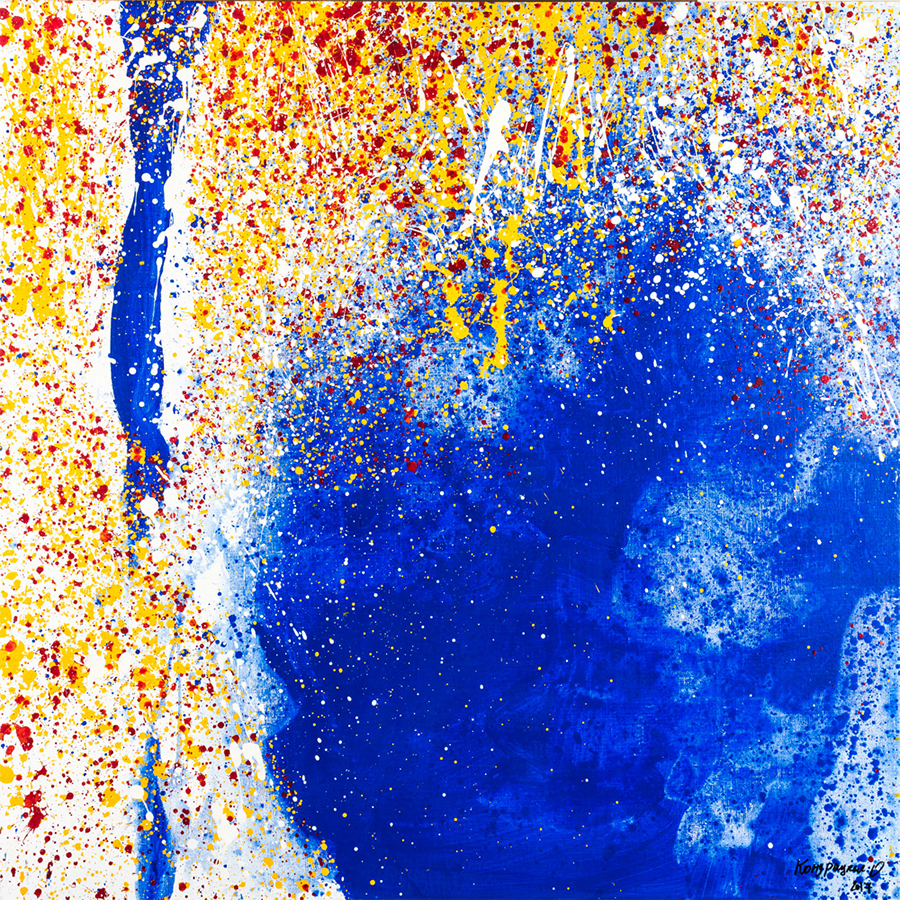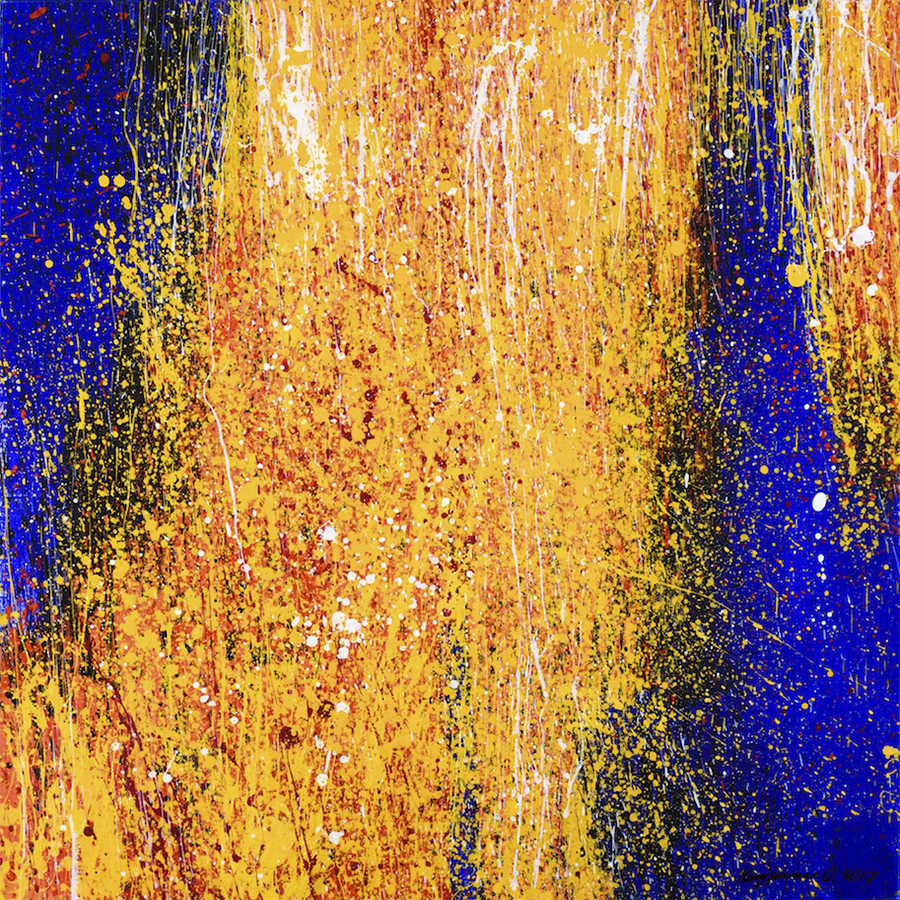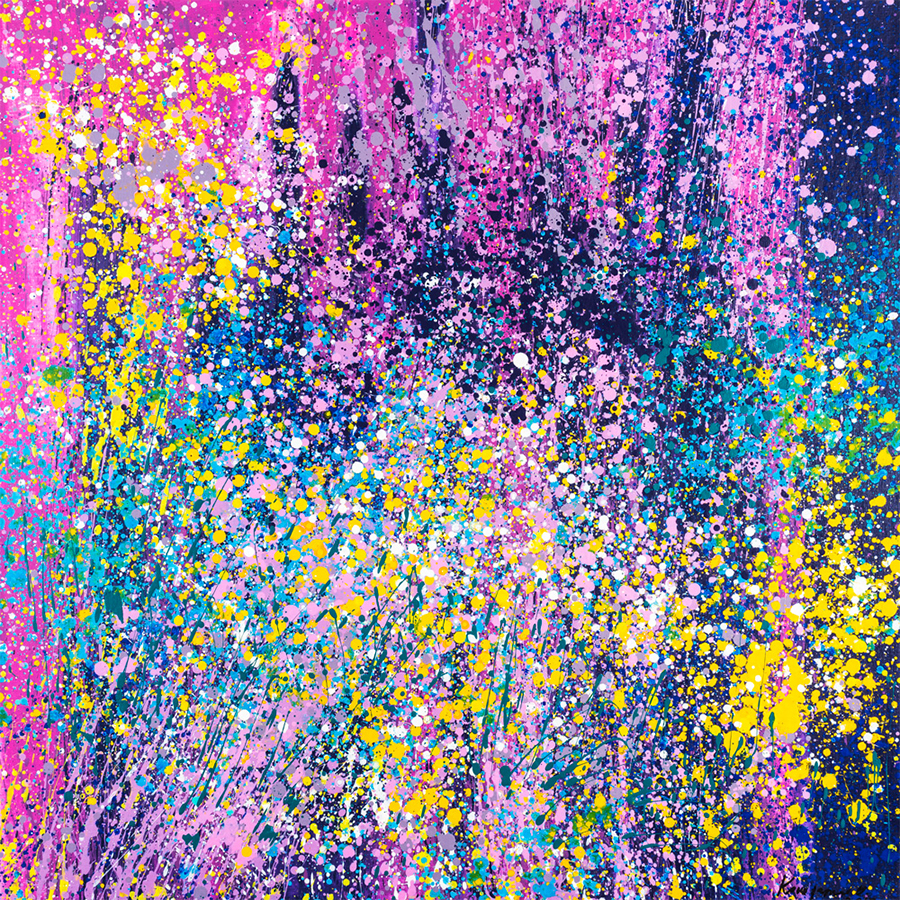EXPLORE OUR Collection
Read More About Collection
Olga Kondratska
RIVER OF LIVE
Set lose dear
Art history is the study of objects of art in their historical development and stylistic contexts, i.e. genre, design, format, and style. This includes the “major” arts of painting, sculpture, and architecture as well as the “minor” arts of ceramics, furniture, and other decorative objects.
As a discipline, art history is distinguished from art criticism, which is concerned with establishing a relative artistic value upon individual works with respect to others of comparable style, or sanctioning an entire style or movement; and art theory or “philosophy of art”, which is concerned with the fundamental nature of art.
The first attempts to create a theory of art were made in the ancient era by Plato and Aristotle, for example. Among the ancient scholars’ works there are practical manuals on art (Vitruvius), and descriptions of art monuments (Pausanias, Philostratus). Pliny the Elder wrote an extensive treatise on ancient art. A number of works in this discipline appeared in the Renaissance. The main point is “Biographies of the most famous painters, sculptors and architects” by Giorgio Vasari.
A systematic study of art works, which provides for an independent branch of science, appeared not long time ago. Winckelmann’s writings thus were the beginnings of art criticism. His one most notable work that introduced the concept of art criticism was “History of Art in Antiquity.” A valuable contribution to the development of this science was made by the Western European enlighteners of the 18th century – Denis Diderot, Lessing and others.
OLGA’s painting impress instantly. It is large-format, energetic and magical. There are special and precious elements of picturesque freedom and happy improvisation in it.
This painting has rich inner content. Its full-bloodedness, saturation with a variety of colors is the embodiment of the fullness of wellbeing and enjoying life. It’s like a river full of water, a river of life. That is the main reason for the name – The River of Life. Olga’s painting captures attention completely, it is accepted and remembered.
Probably, this happens because each of its canvases is decided as a non-final variability of signification, where the semiotic inexhaustibility of the surface is understood as the self-organizing structure of a free open environment. This is starry sky above your head. It is a painting of the joy of life, hedonism, birth and flowering.
This is how a new language sounds, that tells us about novelty and experience, which can not be expressed rather than another language of superficial mimesis. This is the transformation of painting into a genuine existential experience, where the main thing is neither image nor figure, but the case that gives the impetus and cause for an amazing color environment, and as a result expresses a “cascade of improvisations” that is luxurious in rapid brightness.
This painting is the best spontaneous expression of modernity, exactly a person in a big city of a changing explosive world, and this painting improves our “ability to exist in disproportion”. This painting says that a new way of seeing the world is in the search for a new way of its expression. Thus, a new style of thinking and, in fact, a new style of visual culture is forming now. This painting is the action in the most impressive and beautiful of its expression, this is an adventure that leads to the unknown world.
All style features of OLGA’s painting go back to a modernistic school, precisely, to the abstract expressionism of the mid-twentieth century — Jackson Pollock, Barnett Newman, Mark Rothko, Willem De Kooning, to the impressive achievements of this so-called “heroic generation” of American painters. It was there, in their works, a new way of seeing and perceiving, when painters experienced an urgent needs for the newest language of non-objective art. As stated in the manifesto of American painters — “The world of the imagination is completely free and provocatively opposed to common sense”.
OLGA’s painting is based on the modernist principle of the beginning of the last century — the automatic writing of Andre Masson. He and his followers wrote directly “from the unconscious”, revealing all the subconscious truth hidden in the mind. The painting of the action, that Pollock used to call “dripping”, followed the ideas similar to the automatic writing exposing the subconscious. In both cases the images came out of the artist’s inner impulses.
OLGA is guided by similar principles too. Her paintings are multidimensional, timeless, and surprisingly spatial for their principal flatness. An illusion of infinite multi-layered depth is made in her paintings, especially from the close look, and it captures at once, amazes. The main thing here is a sensual, almost physical, tactile experience of color, as the main goal and task of abstract art.
Every picture is a result of a deliberate and unprepared process, an inspired improvisation of layers of pouring paint. It seems that OLGA has found herself here. And the color is felt like a living, mobile substance, material that is made of stars. All images on OLGA’s pictures spread across the horizon and then shrinking, expanding, pulsating, fading, flaring, spinning, shimmering in the cosmic music of the spheres like the starry sky. This is not just abstraction, but a convincing formula for life and the universe.
OLGA’s work becomes a playground for creative minds; it confirms that art is an elitist calling.
By the way, Korovin and Miro are OLGA’s the most beloved artists of the past. Konstantin Korovin is very special for her by his emotionality of color, his experience of self-sufficient beauty, constant movements, and all his artistic, and miriscus spirit. Joan Miró is a Catalan surrealist, but is better known for his abstract works. “A picture should be like a flash” — this is how Miró expressed himself about in his painting, “an artist from the stars”. Now it becomes clear the aesthetic orientation and idealistic stylistics of OLGA’s works.
These paintings are formally completed, as it should be with modern abstract compositions in color. This is precisely her formalism — free, powerful and harmonious. And her paintings appeal to the highest moral principle of a man’s soul, to the principal that Kant called the “categorical imperative”. OLGA is beautiful as her paintings — “rivers of live”, “star constellations”… This is exactly what a female artist should be.

RIVER OF LIFE
The comprehensive name for this series deserves the universality that’s the reason to call the whole framework of Olga’s abstract painting. Variable flow of this “river of life” carries organic forms like a current, personal hopes and sensations, universal contemporarily, the architectonics of the universe, the smallest intuitions, color divergences, and corpuscles and molecules that make up everything, even distant cosmic substance. The spirit of painting feels its place here. There is spontaneity, freedom and a game of improvisations.

STRAND OF ARIADNE
ARIADNA was a beloved of Dionysus. She saved Theseus in the Labyrinth by handing him a saving tangle of threads. The threads shone in the darkness and indicated the way out to the hero. That is why the picture is dominated by the special energy of the heroine of the myth. The strand shines with a divine-golden light. The artist is overwhelmed in these colors, confirms and deepens them, unites into complex contrasts, elegant combinations, incredibly beautiful. It is a vertical pressure, a descent of the golden radiance downwards; a large rhythm confirms the metaphysical nature of this phenomenon. This composition is filled with almost religious reverence, and this feeling is felt not only by the artist, but also by everyone who sees this luminous picture.

SUMMER GARDEN
It shows not only the beauty that occurs in the artist’s soul, but also her prototype in the real world. This expresses a piercing vitality in this triptych that courses a growth of the garden. This is a burst of a variety of floral forms. It reminds us of the picturesque Giverny, where the magic garden of Claude Monet is located. The garden gave the master pleasure and inspiration. Olga with unusual love and power of embodiment drawы these flowers, shades, stains, patterns, contours and silhouettes that constitute the solar palette of impressionism. Nothing can stop this almost organic growth of painting. Therefore the format strives for expansion and maximum breadth of meaning.
